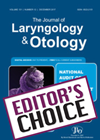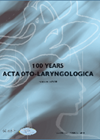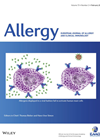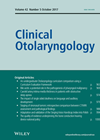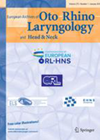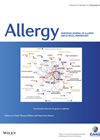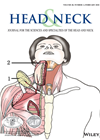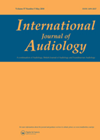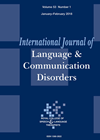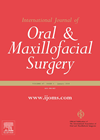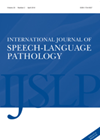
Journal Reviews archive for May 2018
Role of oral and intranasal steroids in the management of otitis media with effusion
Inflammation is considered an important factor in the pathogenesis and continuation of otitis media with effusion. Theoretically, this may support the use of steroids, oral or intranasal in the management of this condition. This study comprised three well matched groups...
Can obstructive snoring affect the snorer’s ears as well?
Patients with obstructive sleep apnoea (OSA) often show severe nasal obstruction, chronic sinusitis and/or a deficit of nasal mucociliary clearance with nasopharyngeal stagnation of secretions possibly predisposing to eustachian tube dysfunction (ETD). This clinical prospective study investigates ETD, nasal resistance...
IL-25 and nasal polyps, another target
Immune response in chronic rhinosinusitis with nasal polyps (CRSwNP) is mainly via type 2 T-helper (Th2) cells while Th1 cells characterise chronic rhinosinusitis without nasal polyps (CRSsNP) immune response. CRSwNP is heterogeneous on a cytological level causing a varied response...
Bile acids and pharyngeal malignancy
Laryngopharyngeal reflux is a commonly described condition. There is strong evidence linking gastro-oesophageal reflux with oesophageal carcinomas. Gastric refluxate consists of gastric acid, pepsin and bile acids. The roles of pepsin and acidic conditions in the development of laryngopharyngeal carcinoma...
Systematic review comparing transoral laser surgery versus open partial laryngeal surgery for advanced laryngeal cancer
The aim of this Italian systematic review was to establish outcomes (local control and survival) of conservative laryngeal surgery for advanced T stage laryngeal cancers. Articles published from 1980 onwards, had at least 10 patients that underwent partial laryngeal surgery...
Stem cells in nasal polyposis
Chronic rhinosinusitis with nasal polyps (CRSwNP) is common and is multifactorial with increased T-helper 2 response and active role of interleukin 5. It can be associated with asthma and control of CRSwNP improves lower airway disease. Due to constant cellular...
A mouth-rinse test that can screen for oral cancer?
This paper presents a promising screening tool for oral cancer – using a simple chlorhexidine mouth-rinse. The hypermethylated ZNF582 and PAX1 markers were chosen based on previous studies using oral scraping methods of collection and have been shown to be...
What is the evidence for duration of antibiotic prophylaxis in head and neck free-flap cases?
The topic of this systematic review is one which is commonly heard in discussions between microbiologists and head and neck surgeons – what is the evidence for antibiotic prophylaxis in clean-contaminated free-flap cases, and crucially, how long should antibiotics be...
Directional microphones and speech
This study aimed to research how speech recognition, listening effort and localisation depends on hearing aids’ microphone configuration in people with moderate to severe hearing losses. Eighteen participants with sensorineural, symmetrical, moderate to severe hearing loss were tested. Participants were...
Lack of early vocabulary growth in bilateral cochlear implant children
Studies indicate that children with unilateral implantation may have delayed vocabulary development for long periods of time even after implantation. This Finnish study attempted to find out whether bilateral cochlear implantation was associated with earlier vocabulary development. The authors analysed...
Blindness after orthognathic surgery
This is a case report and review of the literature of this rare, but well recognised alarming complication. The authors discuss the possible mechanisms, suggesting that it does not arise from a direct injury to the optic nerve and is...
Swallow assessment: is clinical judgement or objective measurement more reliable?
Swallowing difficulties are life threatening and are the most common referral reason to speech and language therapists working with the adult population. Video fluoroscopic examination is a common instrumental tool used to assist in the assessment of the risk of...

